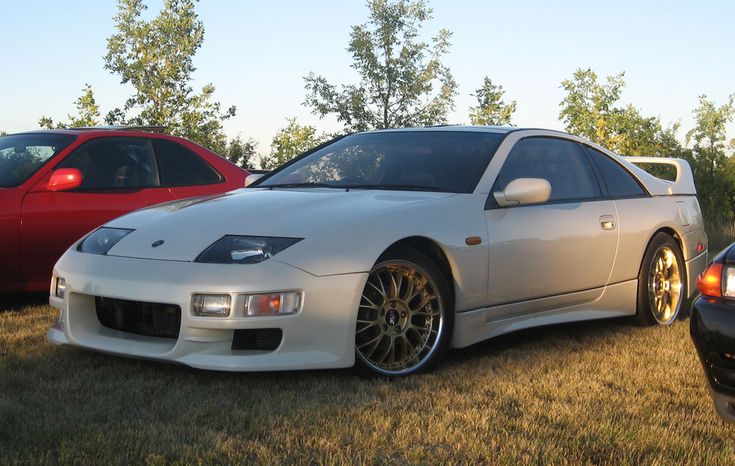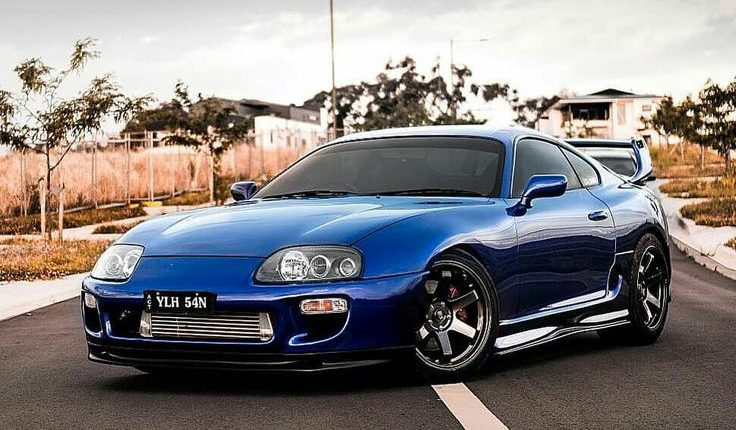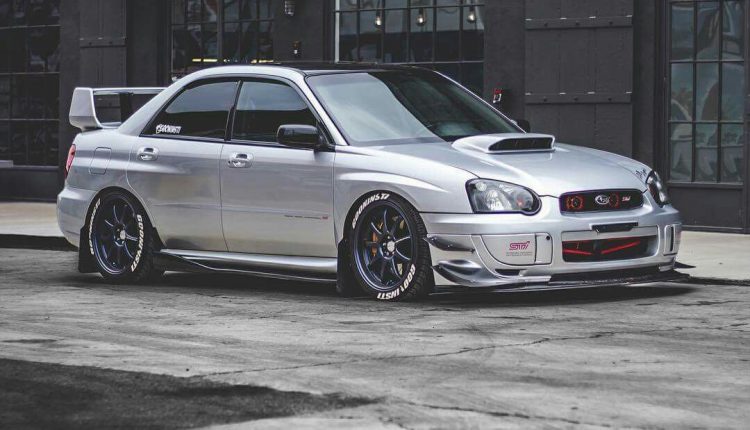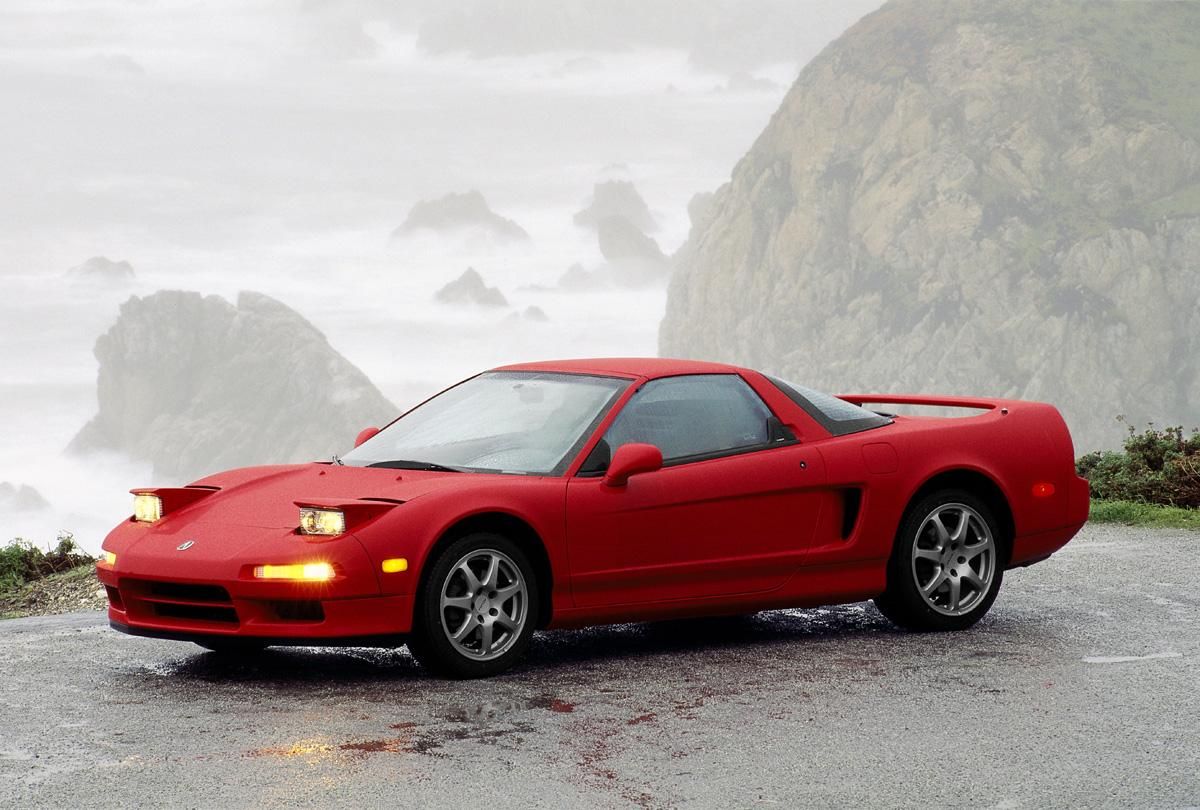Car enthusiasts often have the same opinion: the 90s of the 20th century was the golden age of Japanese sports cars. Some models are still popular these days and are loved by many motorists. Although launched over 30 years ago, these sports car models still have remarkable speed and are not inferior to today’s modern car models. Are you curious about these legendary sports cars? Let’s deep into our article to admire the top 10 Japanese sports cars 90s!
Contents
Top 10 Legendary Japanese Sports Cars 90s
Automakers also create a number of legendary sports cars in the enthusiast cars community. Even today, as the world catches up and introduces the most innovative sports cars, the JDM sports car craze of the 1990s is still going on! Some variants of famous 90’s Japanese sports cars even take things to the next level. In this article, we will talk about some of the features of these cars and provide insights into what made these cars become legendary. Let’s start the journey to discover the 10 amazing Japanese sports cars 90s:
Mazda RX-7 FD

The first car on this list we will mention is Mazda RX-7 FD. Produced and marketed in 1991, Mazda RX-7 is loved by JDM car enthusiasts because it converges on two extremely important criteria when it comes to sports cars: impressive performance and captivating styling! And FD is the third generation of the RX-7 that made the icon for 90s sports cars.
The RX-7 possesses a lightweight chassis platform, and especially a sequential twin-turbo engine. Thereby becoming Japan’s first mass-produced commercial vehicle equipped with this engine. Mazda engineers meticulously placed this rotary engine block directly behind the front axle of the RX-7, making the car achieve a nearly perfect 50/50 mass distribution. Plus, the car’s center of gravity is quite low, the RX-7 can accelerate from 0 to 100 km/h in 5.9 seconds before reaching a maximum speed of 249 km/h. Thanks to the operation of the sequential twin turbochargers, torque is produced steadily throughout the engine rpm range, which makes it easy for drivers to handle the steering.
Not only that but the RX-7 is also considered one of the most outstanding JDM cars because of the economic factor. The engine block has a smaller capacity than the 1.5L threshold so it is not taxed too high, making the car more accessible than other options, while the performance is sometimes even better!
Honda NSX
NSX was one of the flagship sports cars for Japanese automakers in the 90s. There are so many great things to say about the Honda NSX – the first Japanese car to reach the supercar level, was developed to compete directly with Ferrari and change the perception about sports cars. At that time, Honda did what seemed like an impossible thing: designing a 2-door/2-seater car with a mid-engined engine and performance that surpasses even the “big” Italians like Ferrari and Lamborghini, while being cheaper!
The secret of this success comes from the powerful V6 engine block with 24 valves, 3.0L capacity, and the application of extremely advanced electronic variable valve opening and closing technology called VTEC (Variable Valve Timing and Lift Electronic Control).
To take full advantage of VTEC technology, the engine will have to spin more than usual: up to 8,000 rpm! Honda engineers had to resort to connecting rods made from titanium – a wonderful material that is as light as aluminum but stronger than steel – for the first time in a commercial vehicle. NSX can accelerate from 0 to 100 km/h in 5.7 seconds, with a maximum speed of 270 km/h.
The Honda NSX is also the first commercial production vehicle with an all-aluminum chassis and the application of aluminum in the suspension components, thereby saving a total of 220 kg compared to traditional materials like steel. Some other features such as the possession of an ABS anti-lock braking system and electric power steering provide additional value to the NSX.
>> Read more: The 10 Best Street Racing Cars
Nissan 300ZX

90s Nissan 300ZX has made a new era classic in the sports car community. Produced from 1989 to 2000, 300ZX has made a name for the sports car line of Japanese car manufacturer Nissan. These models have been collected more and more by racers over the years.
This sports car belongs to the Fairlady Z line and stands out thanks to its radically different appearance from its predecessor Z31 generation. When it replaces most of the boring angular lines with a beautifully curved body. Nissan once advertised that it had to use the computing power of the Cray-2 supercomputer and a special CAD design software to create the 300ZX Z32 “attracting” many motorists, as well as achieving better aerodynamic efficiency.
The 3.0L V6 engine taken from the old generation was upgraded to DOHC by Nissan engineers and added N-VCT variable valve technology, thereby significantly improving operating performance. In addition, 300ZX also owns 300 horsepower and 283 lb-ft of torque. It is capable of accelerating from 0 to 100 km/h in just 5 seconds before reaching a maximum speed of 250 km/h, making it one of the fastest Japanese sports cars at the time of its launch.
The focal feature of Nissan cars in the 1990s period was that they were offered to the market with many configuration versions and actively applied advanced technology, which was also fully demonstrated on the 300ZX. This model has Super-HICAS on high-end configurations with twin turbochargers, in addition, the manufacturer is also willing to sell a naturally aspirated engine version for those who need it. Customers can also choose between a hardtop and an open top.
Nissan Skyline GT-R
With the ambition to conquer motorsports, in 1989 Nissan “revived” the name Skyline GT-R, which ended in 1973 to replace the old Skyline GTS-R R31 model. What happened after that has become history, no one is unaware of the high-performance Skyline GT-R R32 of the Nissan brand. When it gave this car company 29 Group A championship titles in the Japanese Touring Car Championship between 1989 and 1993.
In addition to the glory, the Skyline GT-R is also used as a “background” for Nissan to show their most advanced technologies such as the AWD all-wheel drive system called ATTESA E-TS or the all-wheel steering. Super-HICAS. Compared to the standard Skyline line, the special feature of the Skyline GT-R is that it has never been produced anywhere outside of Japan. And it is only exported officially to a few markets including Hong Kong, Australia, New Zealand, and the United Kingdom. But over time, passion has helped Skyline GT-R enthusiasts find ways to take it around the world, participating in almost every race and speed game. And from here, the Skyline GT-R also became a car known to the public.
Toyota Supra

Let’s find out what makes the Toyota Supra become a halo of 1990 sports cars. The fourth generation Toyota Supra is almost completely different from its predecessor when the square shape has disappeared, replaced by attractive curves and the presence of a large sports spoiler that is located behind the tail. For added appeal, Supra also owns the legendary 2JZ-GTE sequential twin-turbo engine block, giving the car the ability to accelerate from 0 to 100 km/h in just 5.1 seconds with a maximum speed of 251 km/h.
Besides engine power, cutting weight is also an important factor for Supra to achieve impressive performance. Some overlooked features of the Toyota Supra:
- 3.0L . Engine
- Engine power from 276 to 326 hp
- Rear-wheel drive
The influence of Supra Mk. IV A80 is not only encapsulated in the JDM community but also spread throughout many countries when appearing in the famous Fast and Furious series. As well as being included in the famous games Need for Speed or Gran Turismo. Today, it is even fancier and more appreciated than the 5th generation Supra that was launched not long ago because it is still a “pure Toyota car”, not a “renamed BMW Z4” like a junior.
Mitsubishi 3000GT
The 1990s were a golden age for Japanese power and Mitsubishi wanted a place of its own. Also known as 3000 GTO in Japan, 3000GT at that time was often mistaken as a model from Ferrari (250 GTO or 288 GTO). However, the performance of the car can be said to be not inferior to the names of the Italian brand thanks to many special features:
- A 320 horsepower twin-turbo
- 3.0L V6 engine with a 2-wheel drive system
- 4-wheel steering
- Active aerodynamics
- Multi-mode shock absorbers
Launched in 1990, Mitsubishi introduced the latest technologies at the time. The 3000GT’s 3.0-liter twin-turbo V6 was also a technological advance over its contemporaries. Even compared to today’s modern cars, the Mitsubishi 3000GT is not inferior. With a capacity of over 300 horsepower, this car can achieve speeds of up to 256 km/h.
Despite the lifespan of decades, even more, than half a century, these six-cylinder engines can still bring to their riders a fun, smooth, and even driving experience. Even things that modern cars can’t do.
Mazda MX-5 Miata
Developed in 1989, the Mazda Miata quickly became one of the most popular two-door roadsters of the 90s thanks to its compact size, lightweight, and enjoyable driving experience. The roadster possesses modern equipment that many contemporaries do not have such as airbags, anti-skid systems, and anti-lock brakes. The MX-5 is the perfect successor to the soul of the British and Italian sports cars of the 50s and 60s, based on the styling of the Lotus Elan. Light, compact, using a naturally aspirated engine and rear-wheel drive. It is the perfect recipe for the success of this unique model.
After four generations with countless changes, the MX-5 remains a favorite of those who want to get behind the wheel, a testament to the longevity and success of the model. It is purely an automobile and is a true symbol of Japan’s four-wheeler industry. You can now pick up a first-generation Mazda Miata for around $5,000 on average, a third of the price it sold for when it was launched.
Nissan 240SX
Called “Silvia” in the Japanese market and “200SX” in the European market, the Nissan 240SX was produced in 1989 and ended its life cycle in 1998. During that period, Nissan produced more than 2 million for the US market. This model is very popular with car enthusiasts in the US and has created a “hot trendy” throughout the US. When the 1997 Nissan 240SX version appeared in the first movie of Fast and Furious.
Nissan 240SX has replaced the 200SX (S12) model. Most 240sx were equipped with 4.4-liter inline engines (KA24E from 1989 to 1990 and KA24DE from 1990 to 1998). The KA24E has one overhead cam and the KA24DE has dual overhead cams. Two separate generations of the 240SX, S13 (1989–1994) and S14 (1994-1998) were produced based on the Nissan platform.
Although it is no longer produced, many motorists still look for the Nissan 240SX because this model is especially suitable for drifting. That’s because this model is equipped with a chassis, and rear-wheel drive,… perfect for the drivers to have the opportunity to show off their ability to drive sideways. Even if you don’t intend to “drift”, the Nissan 240SX is still fit to be a high-speed racing car. And it has an elegantly classic look that blends well with a variety of body kits and wheels currently.
Toyota MR-2
Along with Supra and Celica, MR2 has contributed to creating Toyota’s once-popular sports car trio in the Toyota 90s cars. Not only the design, but the sportiness of this model is also clearly shown through the mid-engine structure as well as the performance. In the US market, the MR2 is sold in two variants. In particular, the standard version uses a 2.2-liter naturally aspirated engine with a capacity of 130 horsepower. The other version is the MR2 Turbo, which is more popular thanks to a powerful 2.0-liter turbocharged engine with 200 horsepower.
Toyota MR2 was first introduced in 1984 with a trendy and sporty design at that time. The name MR2 is an acronym for “mid-engine, rear-wheel-drive, 2-seater”
The car was positioned in the general segment of two-door sports cars at the time. So it had a mid-engine and rear-wheel drive, instead of the front-mounted engine commonly found on sports cars of Toyota. At the time of its launch and to this day, car enthusiasts often call the MR2 the nickname “little Ferrari” because of its design and engine configuration.
Subaru Impreza WRX STI

Car enthusiasts JDM is no stranger to the name Subaru Impreza WRX STI. It’s hard to believe that a car can survive and be popular for 20 years. But the Subaru Impreza WRX STI has made it. Renowned for his rallies and fights with rival Mitsubishi Lancer Evolution, today the Impreza WRX STI (or WRX STI) has become a JDM monument.
Designed to conquer world road racing, the Subaru Impreza WRX dominated despite being an improvement from the Impreza until Subaru Technica International (STI) got involved in its construction. The car is starting to show great potential. More power, better handling, cornering, dominating the streets, and racetracks.
Subaru became a pioneer in the use of turbochargers in commercial vehicles. Besides, Subaru turned the WRX STI into a true supercar. A powerful road racing machine that combines every 4-wheel drive with differential locks allowing the car to achieve top performance on the road. Today, the Impreza 22B STI is less talked about when the auto market is growing at breakneck speed.
However, this car is still the focus of many car enthusiasts. When it was auctioned for more than 100,000 USD in 2016. WRX always gives you a feeling of comfort and confidence when operating, whether on any terrain. Perhaps that is why, over the past 20 years, the identity of the WRX still exists, develops, and is preserved.
>> Related post: The Things You Need to Know About Owning a Sports Car
Final Thoughts
It can be said that the 90’s Japanese sports cars were a memorable time for the world auto industry. When they witnessed a strong breakthrough of many iconic cars such as the Mazda Miata, Toyota Supra, and McLaren F1. With timeless designs and impressive power, these models have become an “alive legendary” among car enthusiasts and have brought JDM culture to the world. Cars that celebrate the iconic automobiles from the land of the rising sun. Hopefully, this topic Japanese Sports Cars 90s will give more useful information for sporty car fans.



